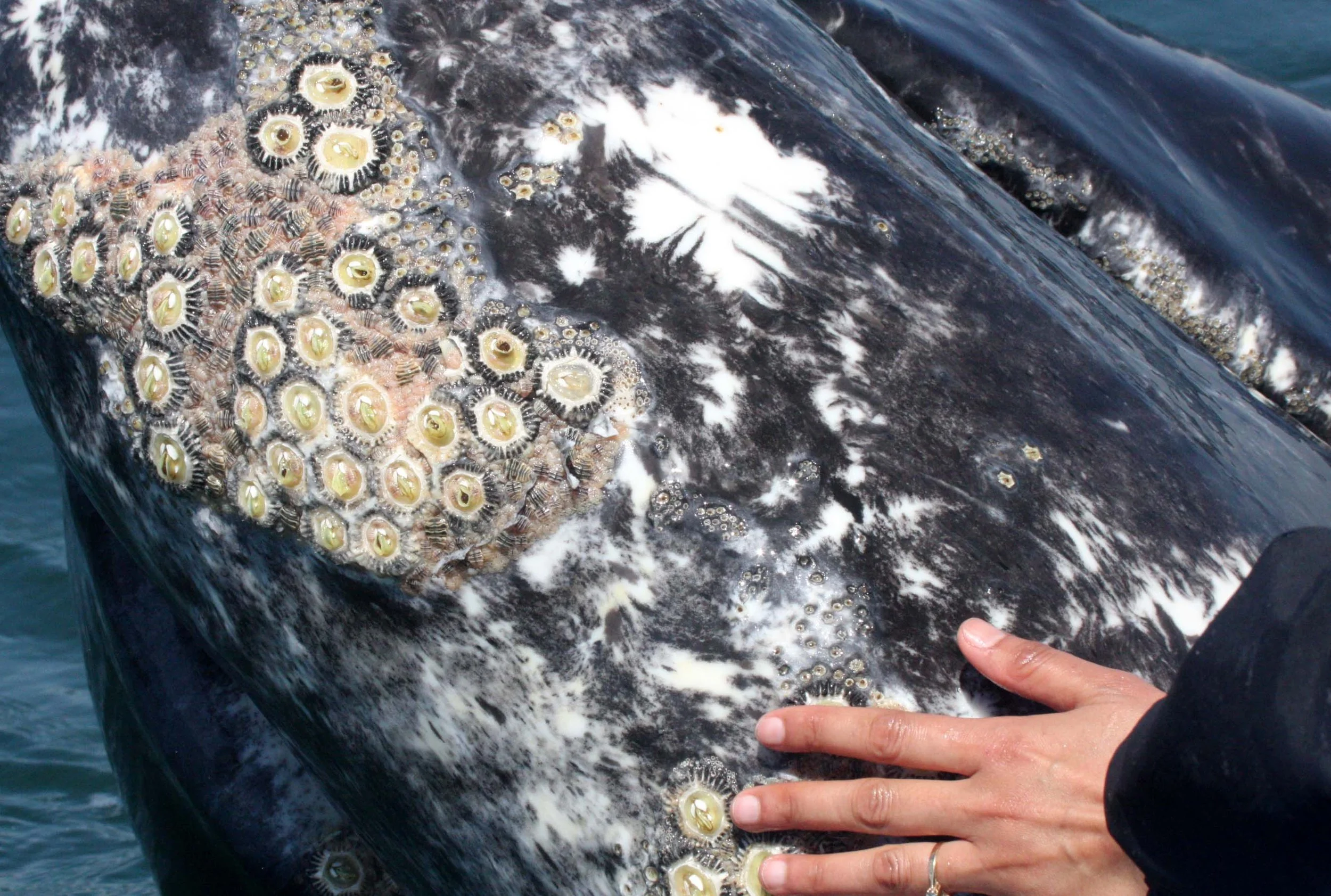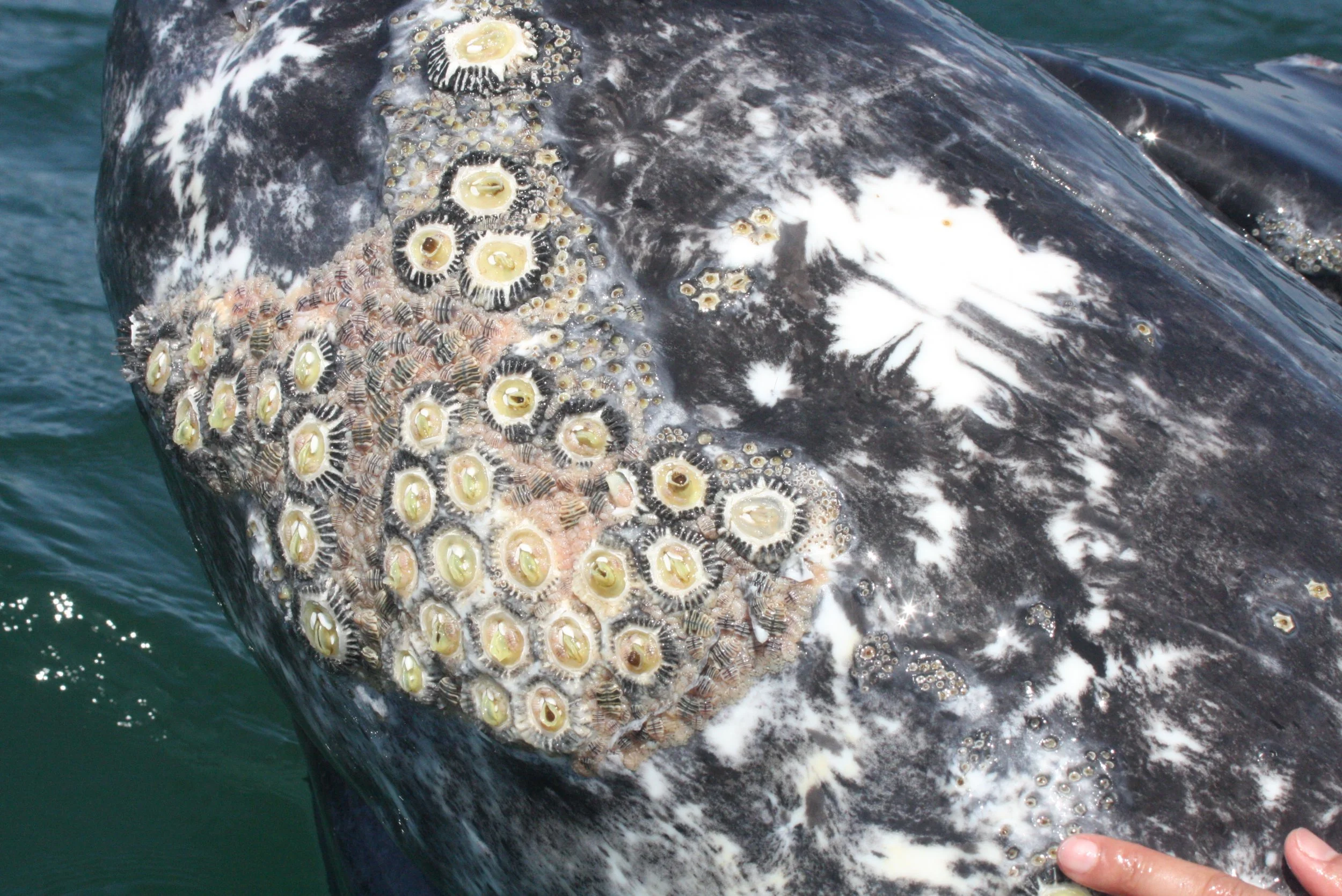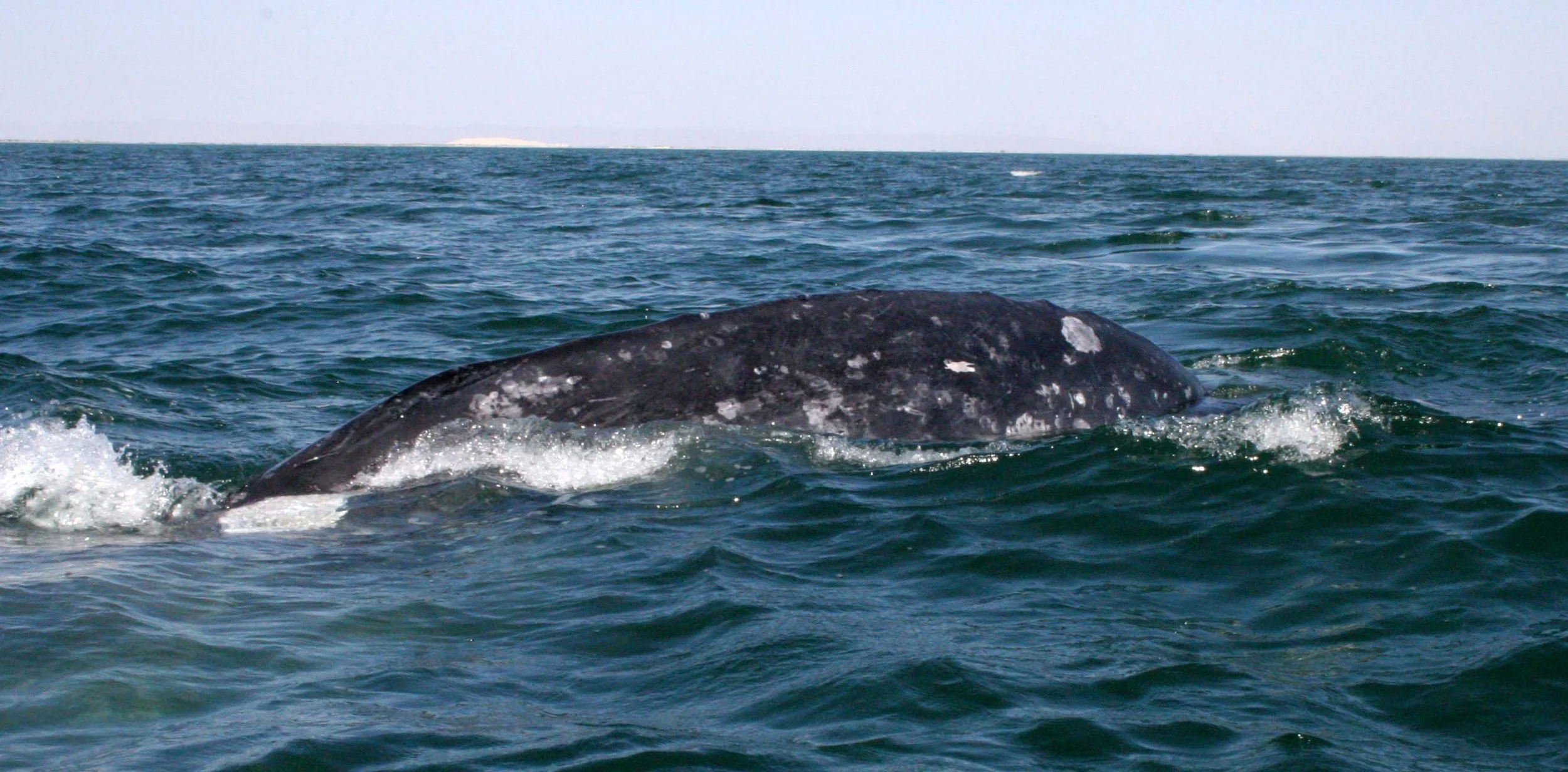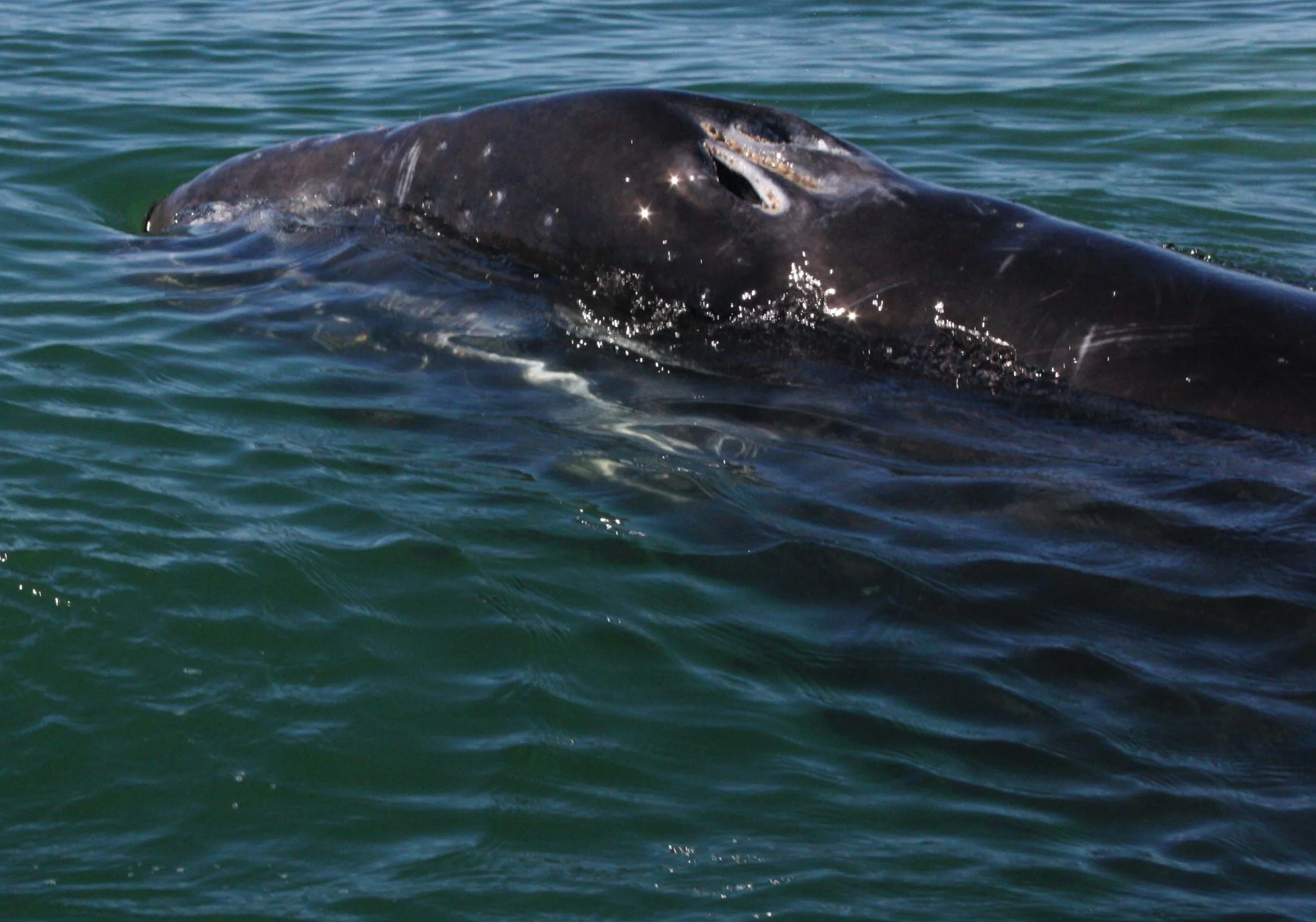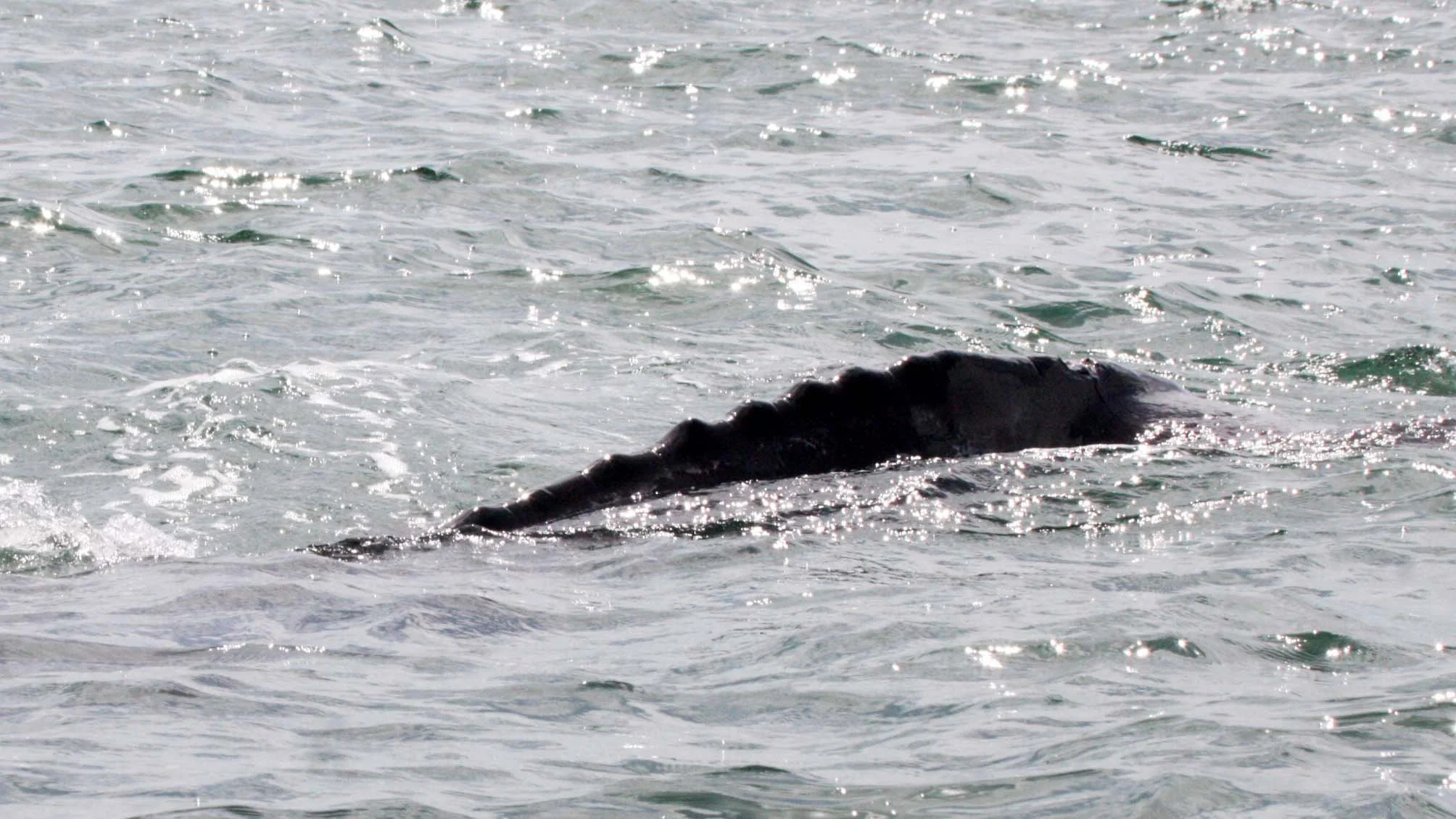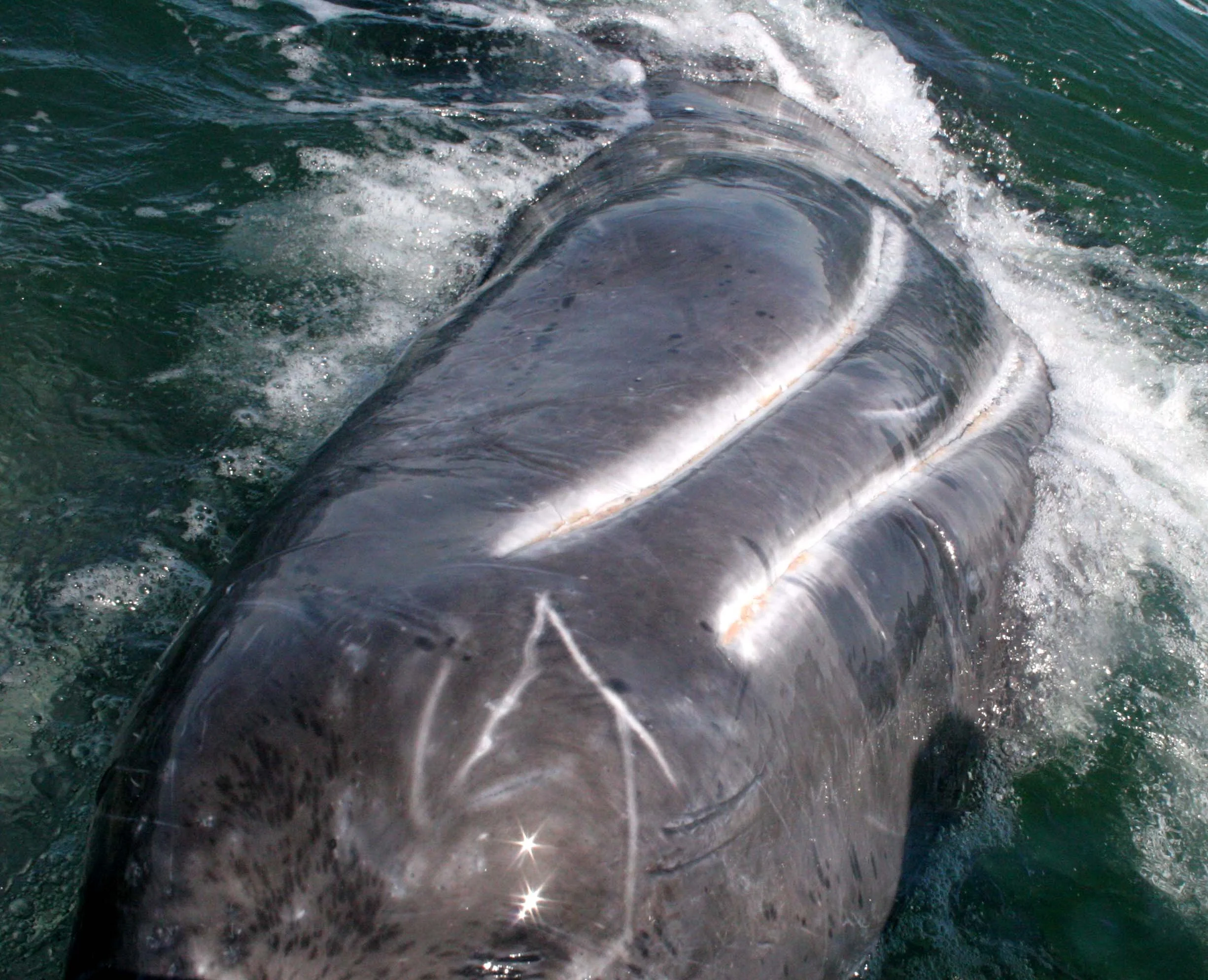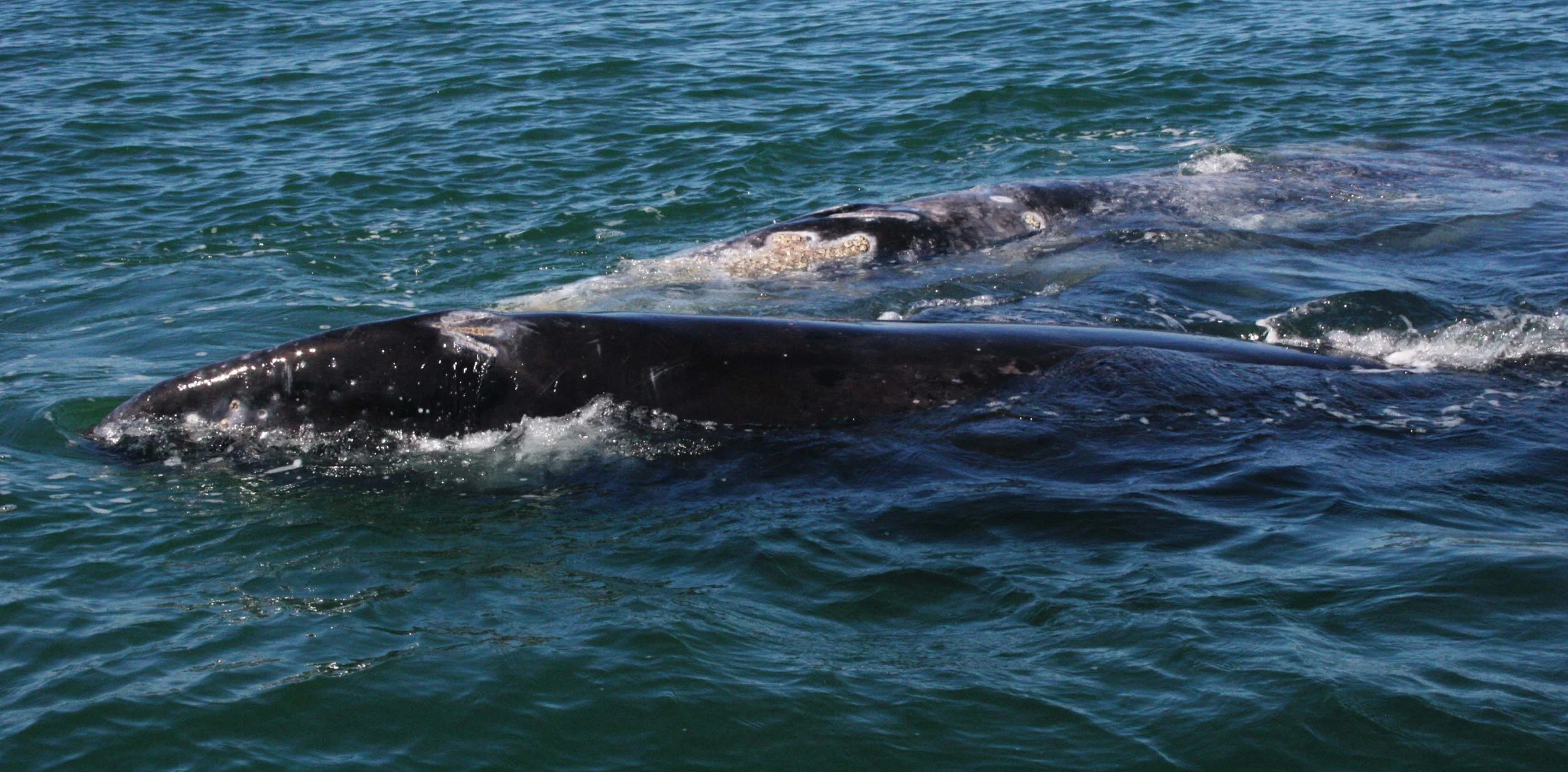The Gray Whale (Eschrichtius robustus), also known as the grey whale, gray back whale, Pacific gray whale, Korean gray whale, or California gray whale, is a baleen whale that migrates between feeding and breeding grounds yearly. It reaches a length of 14.9 meters (49 ft), a weight of up to 41 tonnes (90,000 lb) and lives between 55 and 70 years, although one female was estimated to be 75–80 years of age. The common name of the whale comes from the gray patches and white mottling on its dark skin. Gray whales were once called devil fish because of their fighting behavior when hunted. The gray whale is the sole living species in the genus Eschrichtius. It was formerly thought to be the sole living genus in the family Eschrichtiidae, but more recent evidence classifies members of that family in the family Balaenopteridae. This mammal is descended from filter-feeding whales that appeared during the Neogene.
The gray whale is distributed in an eastern North Pacific (North American), and an endangered western North Pacific (Asian), population. North Atlantic populations were extirpated (perhaps by whaling) on the European coast before 500 CE, and on the American coast around the late 17th to early 18th centuries. However, in the 2010s there have been a number of sightings of gray whales in the Mediterranean Sea and even off Southern hemisphere Atlantic coasts.
Images in this gallery of the breeding population in Laguna San Ignacio, Baja California. Some from West Coast California and Washington State (resident individuals).


























































